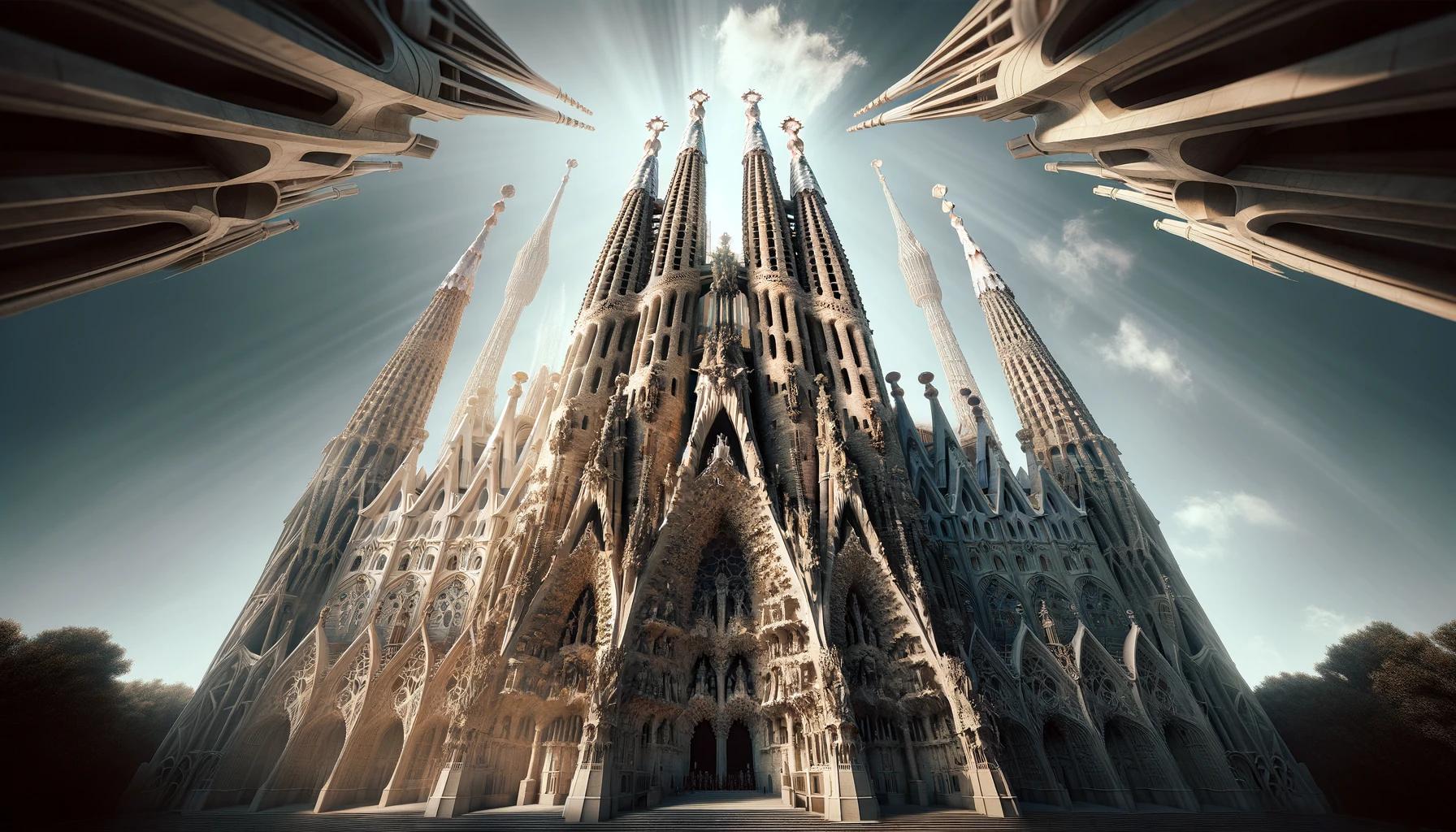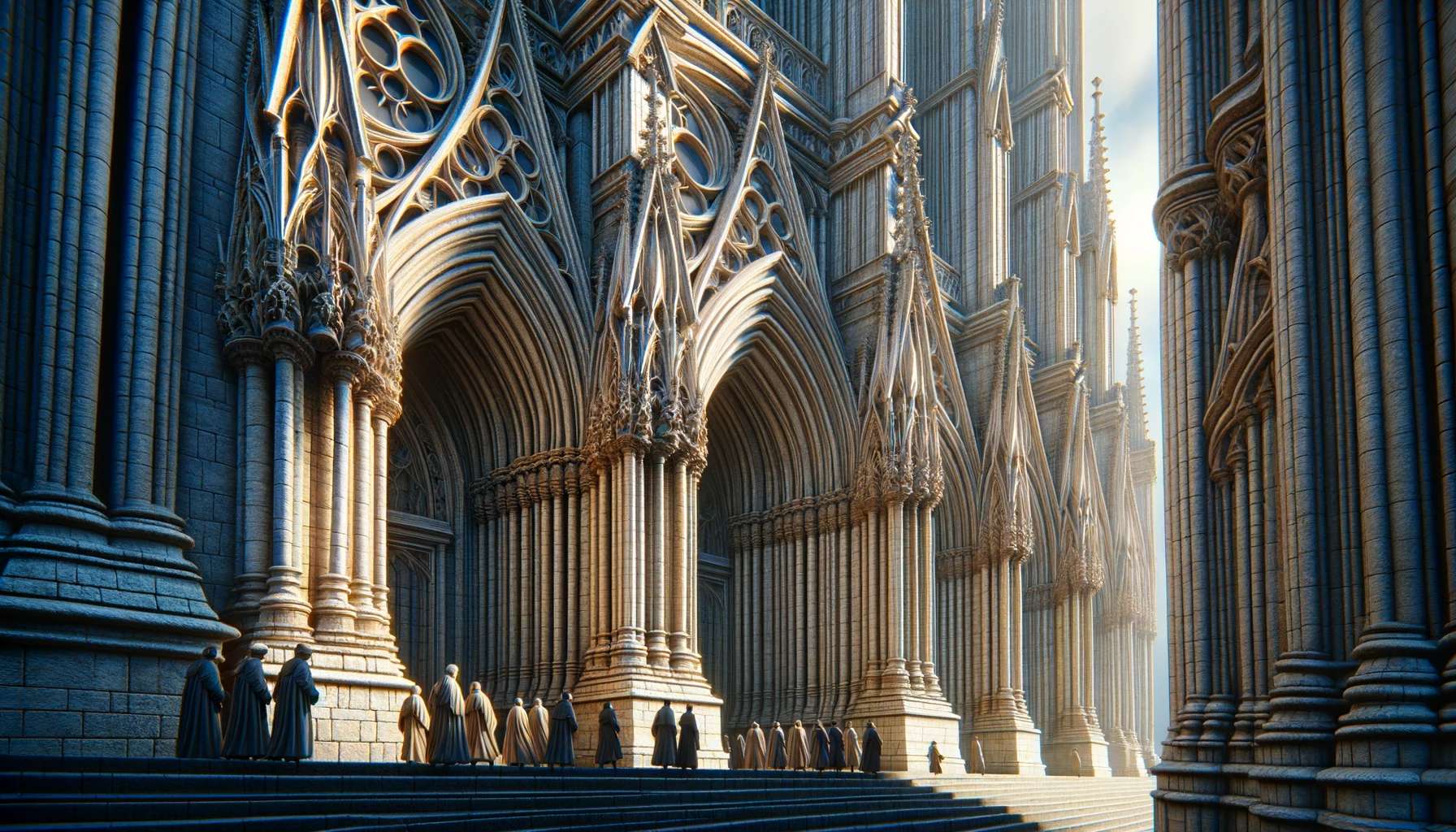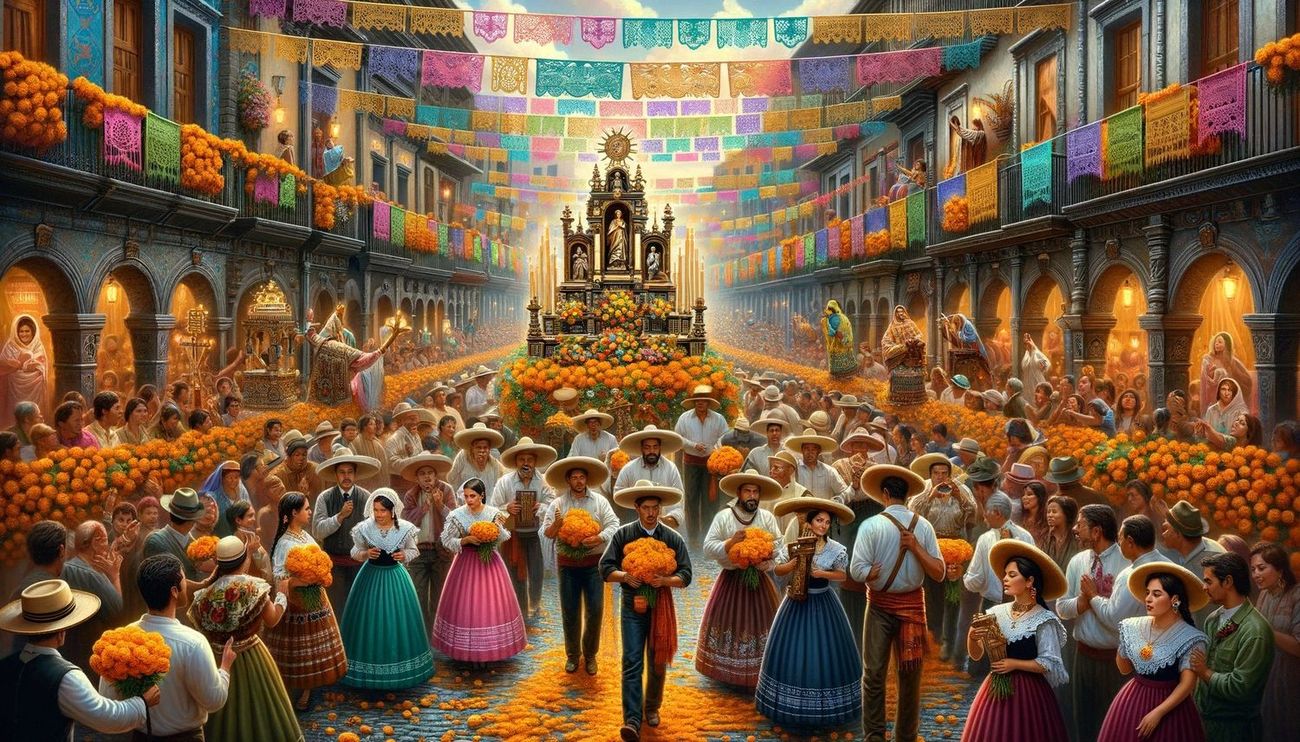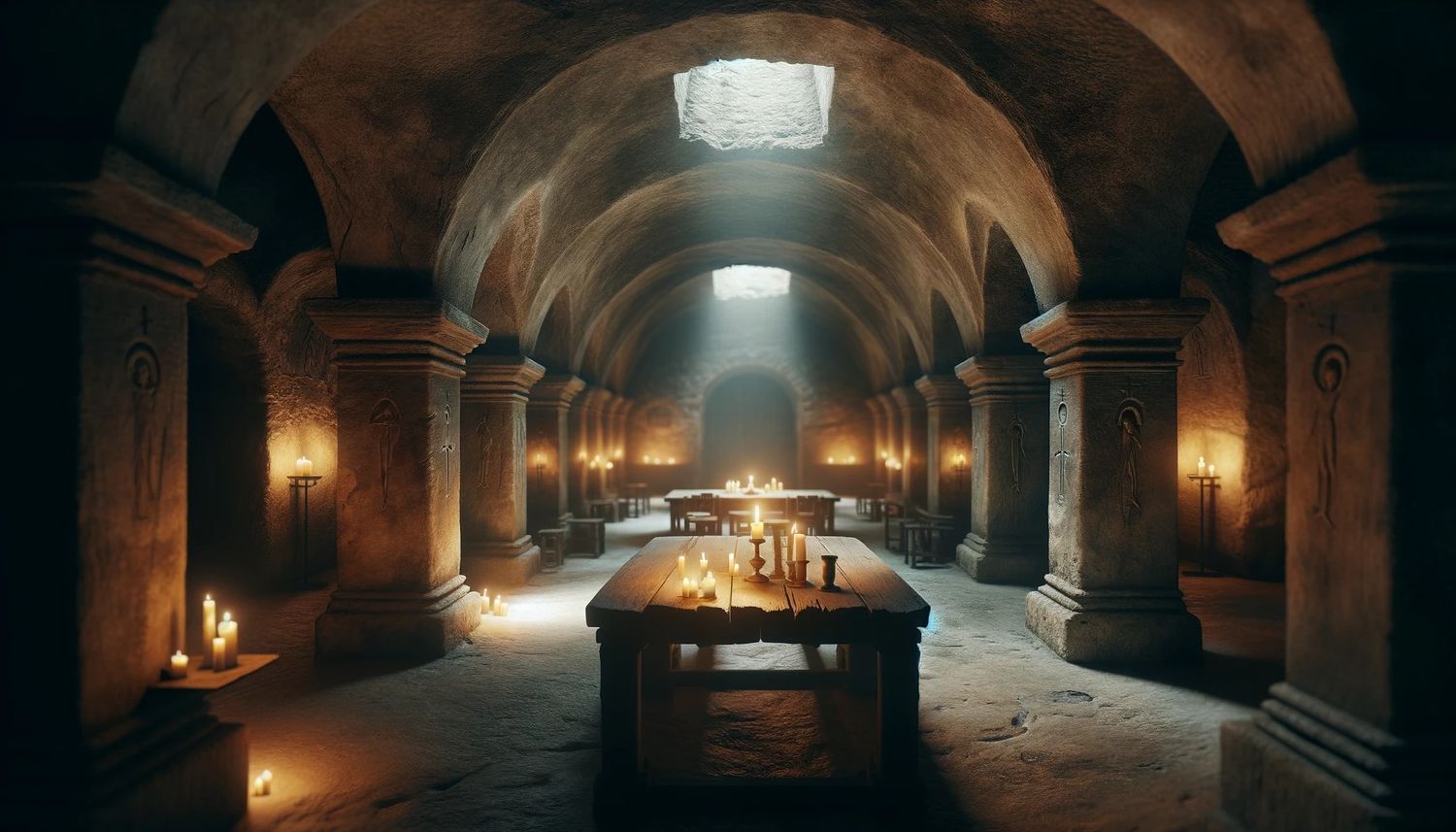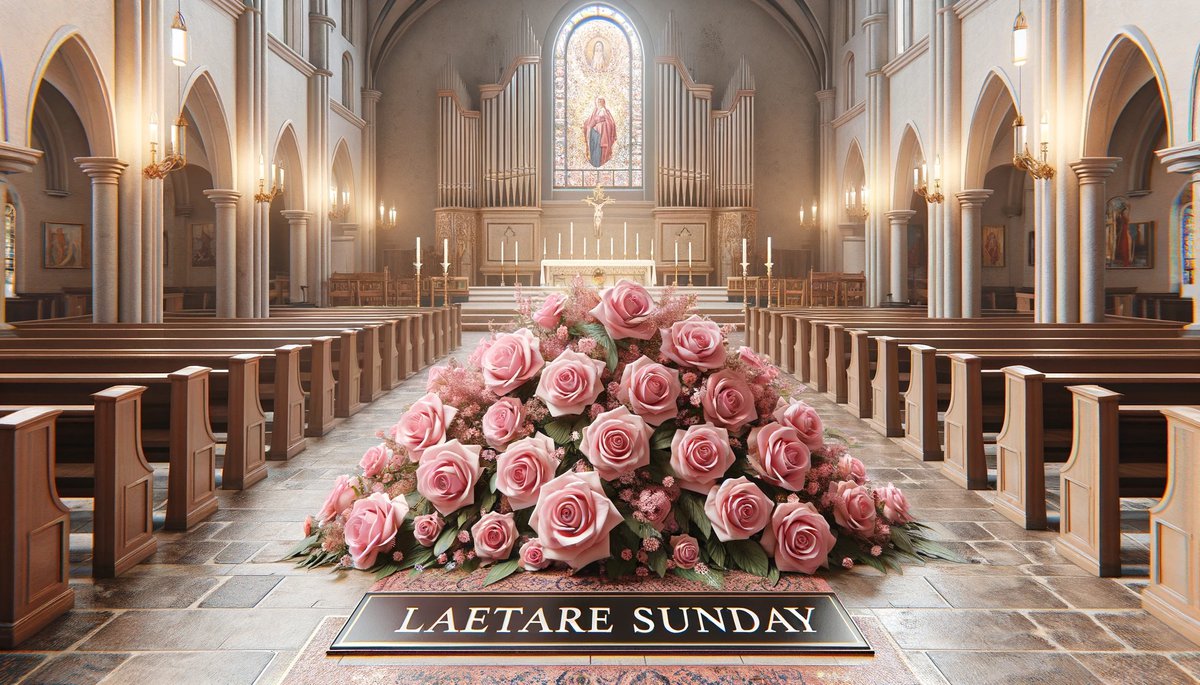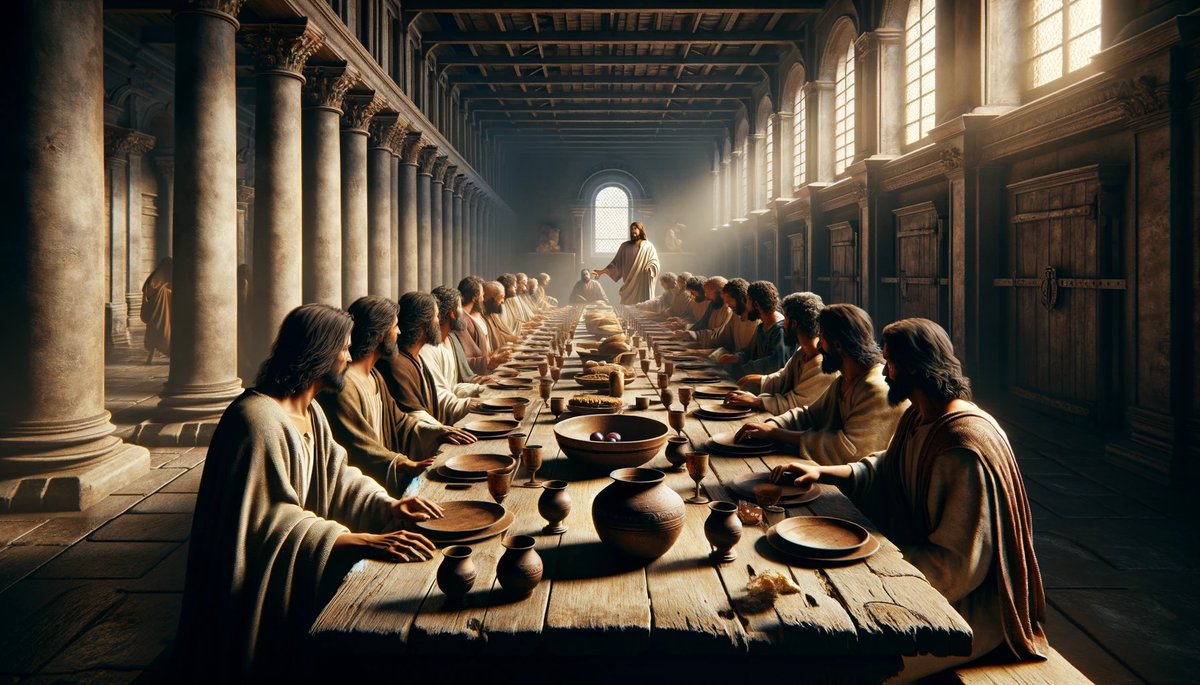Home>Arts and Culture>What Is The Main Part Of A Cathedral Called
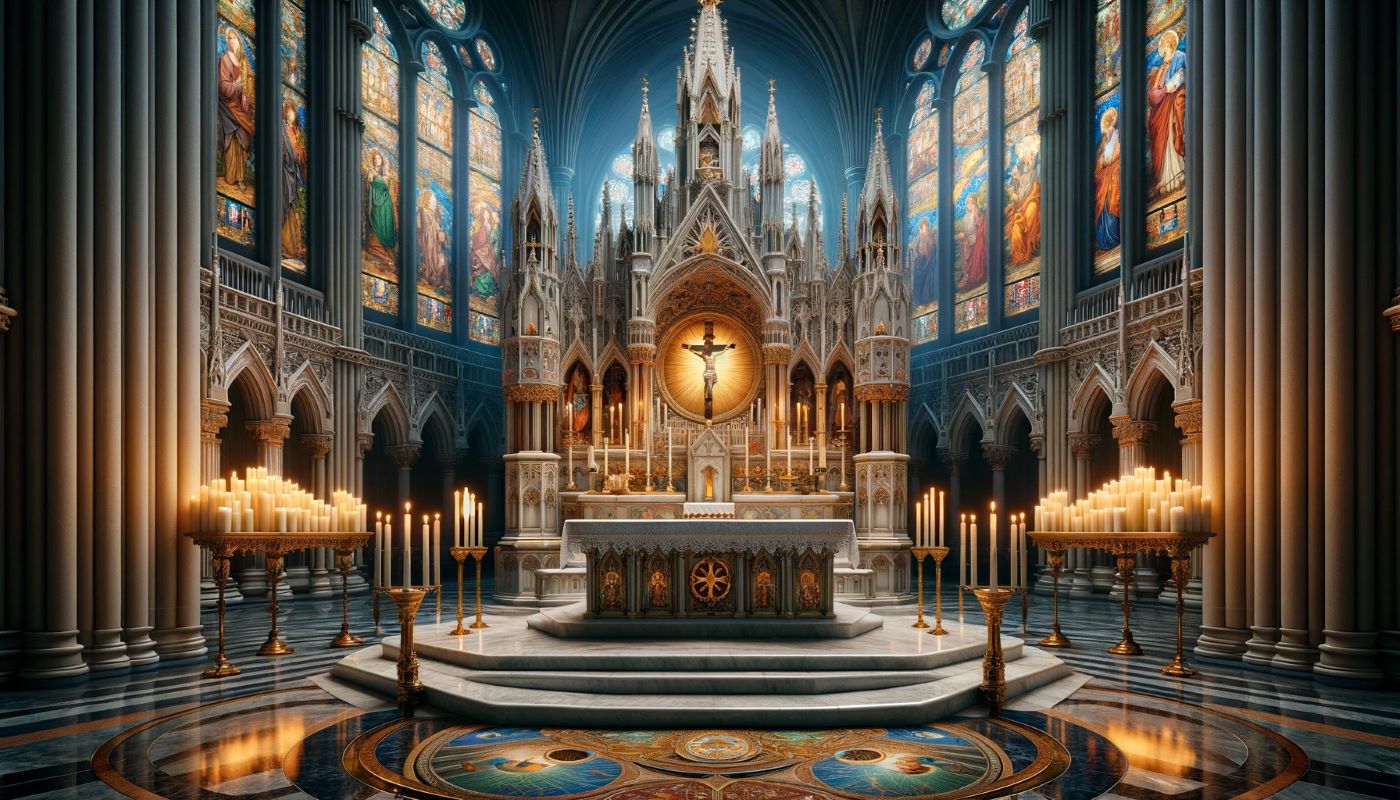

Arts and Culture
What Is The Main Part Of A Cathedral Called
Published: February 16, 2024
Ericka Andersen, an editor at Christian.net, expertly merges digital strategy with content creation, focusing on faith and societal issues. Her communication skills enhance the platform's engaging narratives, fostering meaningful dialogue on belief's impact on society.
Discover the main part of a cathedral and its significance in architecture and history. Explore the arts and culture of cathedrals with our in-depth guide.
(Many of the links in this article redirect to a specific reviewed product. Your purchase of these products through affiliate links helps to generate commission for Christian.net, at no extra cost. Learn more)
Table of Contents
Introduction
Cathedrals are architectural marvels that have stood the test of time, serving as iconic symbols of faith, history, and human ingenuity. These grand structures, often characterized by their towering spires and intricate designs, have been integral to the cultural and religious landscapes of countless cities around the world. As visitors step through the imposing doors of a cathedral, they are greeted by a breathtaking expanse that is steeped in history and significance.
The interior of a cathedral is divided into several distinct sections, each with its own unique purpose and architectural features. Understanding the layout of a cathedral is not only a fascinating exploration of architectural design but also provides insight into the religious and cultural practices of the time in which they were built.
In this article, we will delve into the main parts of a cathedral, shedding light on their individual characteristics and significance. From the awe-inspiring nave to the sacred altar, each section plays a crucial role in shaping the cathedral's identity and purpose. By unraveling the mysteries of these architectural wonders, we can gain a deeper appreciation for the craftsmanship and spiritual significance that have made cathedrals enduring symbols of human creativity and devotion.
The Nave
The nave, derived from the Latin word "navis" meaning ship, forms the central part of a cathedral's interior and is often the first area that captures the attention of visitors. As one steps into the nave, a sense of awe and reverence washes over them, as they are greeted by a vast expanse that stretches towards the grand altar at the opposite end. This central space is flanked by rows of pews, leading the eye towards the intricately designed ceiling that seems to reach towards the heavens.
The architectural design of the nave is a testament to the ingenuity and craftsmanship of the builders. The soaring height of the nave, often accentuated by towering columns and arches, creates a sense of verticality that draws the gaze upwards. The play of light and shadow within this expansive space adds to the ethereal atmosphere, as sunlight filters through stained glass windows, casting vibrant hues upon the stone floor.
Beyond its visual impact, the nave serves a crucial functional purpose within the cathedral. It provides a gathering space for congregants, accommodating large numbers of worshippers during religious ceremonies and events. The acoustics of the nave often lend themselves to music, with the soaring ceilings amplifying the harmonious notes of choirs and organ music, enveloping the space in a symphony of sound.
Moreover, the nave acts as a conduit for spiritual contemplation and reflection. As visitors traverse its length, they are enveloped in an atmosphere of tranquility and reverence, allowing for moments of introspection and connection with the divine. The architectural grandeur of the nave, combined with its spiritual significance, creates a space that transcends the mundane and invites individuals to experience a sense of transcendence and awe.
In essence, the nave stands as the beating heart of the cathedral, pulsating with the collective energy of worship, artistry, and history. It is a space where the earthly and the divine converge, where the human spirit reaches towards the heavens in a testament to faith and creativity. As visitors stand within the expanse of the nave, they are not merely spectators but active participants in a timeless tradition of spiritual contemplation and communal reverence.
The Transept
The transept, a defining feature of many cathedrals, serves as a crucial architectural element that contributes to the overall grandeur and functionality of these magnificent structures. Positioned perpendicular to the nave, the transept forms a cross-shaped extension, creating a cruciform layout that holds deep symbolic significance within the context of Christian architecture.
As visitors move from the nave into the transept, they are met with a sense of spatial expansion and a shift in perspective. The transept intersects the nave, creating a cross-shaped footprint that symbolizes the intersection of earthly and divine realms. This architectural configuration not only serves as a visual representation of the Christian cross but also holds profound spiritual symbolism, emphasizing the centrality of the cross in Christian faith and theology.
The transept often houses additional chapels, altars, and artistic embellishments, further enriching the spiritual and aesthetic experience of the cathedral. These side chapels, adorned with intricate carvings, stained glass windows, and sacred artworks, provide intimate spaces for private prayer, reflection, and veneration of revered saints and religious figures. The transept's role as a hub of spiritual devotion and artistic expression is exemplified through these ornate chapels, each offering a unique narrative that adds depth and richness to the cathedral's overarching story.
Architecturally, the transept's soaring ceilings and expansive dimensions create a sense of openness and grandeur, amplifying the cathedral's overall magnificence. The intersection of the nave and transept often culminates in a soaring central tower or dome, serving as a focal point that draws the eye heavenward. This vertical emphasis, coupled with the transept's lateral extension, creates a harmonious balance of horizontality and verticality, symbolizing the union of earthly and celestial realms within the cathedral's sacred space.
Furthermore, the transept plays a functional role in accommodating large congregations during religious ceremonies and processions. Its spacious layout and strategic positioning allow for unobstructed views and seamless movement, facilitating the smooth flow of worshippers and clergy during liturgical events. The transept's architectural design, characterized by its intersecting arms and expansive dimensions, fosters a sense of inclusivity and unity, inviting congregants to gather and participate in communal worship and celebration.
In essence, the transept stands as a testament to the harmonious fusion of architectural innovation, spiritual symbolism, and communal gathering within the cathedral's sacred precincts. Its cross-shaped embrace, adorned with sacred art and architectural splendor, encapsulates the profound interplay of faith, creativity, and human aspiration that defines the cathedral as a timeless beacon of cultural and spiritual significance.
The Choir
The choir, nestled between the nave and the sanctuary, represents a focal point of spiritual and musical significance within the cathedral's architectural tapestry. As visitors transition from the expansive nave towards the sanctuary, they encounter the intimate and reverent space of the choir, which serves as a platform for choral performances, liturgical rituals, and communal worship.
Architecturally, the choir is often demarcated by a screen or low walls, creating a sense of separation from the nave while maintaining a visual connection to the sanctuary. This spatial arrangement not only delineates the area for the clergy and choristers but also imbues the choir with a sense of sacred enclosure, fostering an atmosphere of reverence and devotion.
The choir stalls, intricately carved and often adorned with ornate details, provide seating for the clergy, choristers, and sometimes dignitaries during religious services. These meticulously crafted seats, arranged in rows facing each other, create a sense of communal gathering and shared purpose, reflecting the unity and harmony inherent in collective worship.
Beyond its architectural and functional aspects, the choir serves as a stage for the melodious interplay of sacred music and vocal harmonies. The soaring voices of choristers resonate within the hallowed space, enveloping congregants in a symphony of spiritual expression. The acoustics of the choir, carefully designed to enhance the resonance and clarity of choral music, elevate the auditory experience, infusing the cathedral with an ethereal ambiance that transcends the ordinary.
Moreover, the choir holds a pivotal role in the liturgical proceedings, leading congregants in hymns, chants, and responses that punctuate the rhythm of religious ceremonies. The interplay of music and ritual within the choir creates a multisensory experience, engaging worshippers on a profound emotional and spiritual level. As the voices of the choir reverberate through the sacred space, they evoke a sense of transcendence, inviting individuals to immerse themselves in the collective expression of faith and devotion.
The architectural and artistic embellishments within the choir, including intricately carved stalls, vibrant stained glass windows, and sacred artworks, contribute to the sensory richness of the space. Each element, meticulously crafted and imbued with symbolic meaning, adds layers of depth and significance to the choir, enriching the spiritual journey of those who gather within its embrace.
In essence, the choir stands as a testament to the harmonious fusion of architectural innovation, musical artistry, and communal worship within the cathedral's sacred precincts. Its intimate setting, adorned with sacred music and visual splendor, encapsulates the profound interplay of faith, creativity, and human aspiration that defines the cathedral as a timeless beacon of cultural and spiritual significance.
The Apse
The apse, a defining feature of many cathedrals, stands as a testament to the architectural and symbolic richness embedded within these magnificent structures. Positioned at the eastern end of the cathedral, opposite the main entrance, the apse serves as a focal point of spiritual significance and artistic grandeur.
Architecturally, the apse often takes the form of a semicircular or polygonal projection, creating a sense of enclosure and emphasis on the sanctuary. This distinctive layout not only draws the eye towards the sacred focal point but also symbolizes the embrace of divine presence within the cathedral's sacred precincts. The apse's curved expanse, often adorned with intricate architectural details and ornate embellishments, evokes a sense of visual harmony and spiritual resonance, inviting contemplation and reverence.
The apse typically houses the high altar, a central and elevated platform that serves as the focal point of the cathedral's liturgical rituals and sacraments. The high altar, often adorned with sacred imagery and symbolic motifs, stands as a visual anchor within the apse, drawing the gaze and reverence of congregants towards the sacred focal point. The positioning of the high altar within the apse underscores its centrality in the celebration of the Eucharist and other sacred rites, emphasizing its role as the spiritual axis around which the cathedral's worship revolves.
Furthermore, the apse often features a soaring vaulted ceiling, adorned with intricate frescoes, mosaics, or stained glass windows that depict scenes of religious significance. These artistic embellishments, bathed in the soft glow of natural or artificial light, create a transcendent ambiance within the apse, infusing the sacred space with a sense of ethereal beauty and spiritual contemplation. The interplay of light and artistry within the apse elevates the sensory experience, inviting congregants to immerse themselves in the visual narrative of faith and salvation.
In addition to its architectural and artistic significance, the apse holds deep symbolic meaning within the context of Christian theology and worship. Its positioning at the eastern end of the cathedral aligns with the traditional orientation towards the rising sun, symbolizing the anticipation of Christ's return and the dawning of a new spiritual era. This alignment with the sunrise underscores the apse's role as a space of hope, renewal, and divine revelation, encapsulating the profound symbolism woven into the fabric of cathedral architecture.
In essence, the apse stands as a testament to the harmonious fusion of architectural innovation, sacred symbolism, and spiritual contemplation within the cathedral's sacred precincts. Its semicircular embrace, adorned with sacred art and architectural splendor, encapsulates the profound interplay of faith, creativity, and human aspiration that defines the cathedral as a timeless beacon of cultural and spiritual significance.
Read more: What Is The Main Message Of Advent?
The Altar
The altar, positioned within the apse at the eastern end of the cathedral, stands as the spiritual focal point and sacred nexus of the entire edifice. As congregants approach the altar, they are met with a profound sense of reverence and awe, for it is here that the most sacred rituals and sacraments of the Christian faith unfold.
Architecturally, the altar is often elevated on a platform, drawing the eye towards its sanctified presence. Adorned with intricate carvings, symbolic imagery, and ornate embellishments, the altar serves as a visual testament to the spiritual significance of the space it occupies. Its elevated position within the apse symbolizes its role as the axis mundi, the center of the sacred cosmos within the cathedral, around which the spiritual life of the community revolves.
The high altar, in particular, holds a position of utmost sanctity within the cathedral. It is here that the Eucharist, the central sacrament of the Christian faith, is celebrated, signifying the reenactment of Christ's Last Supper and the communal sharing in the body and blood of Christ. The ritual of the Eucharist, with its profound theological and spiritual implications, unfolds upon the altar, infusing the space with a sense of divine presence and transcendent significance.
Beyond its role in the celebration of the Eucharist, the altar serves as a site for other sacred rites and ceremonies, including the celebration of the sacraments, the offering of prayers and intercessions, and the veneration of relics and sacred objects. Its significance extends beyond the physical space it occupies, encompassing the spiritual and communal dimensions of the cathedral's life and worship.
The altar, as a locus of spiritual encounter and divine communion, invites congregants to participate in the sacred mysteries of the faith, fostering a sense of connection with the divine and with one another. Its ornate decoration, often featuring depictions of biblical scenes, saints, and angels, creates a visual narrative that enriches the spiritual journey of those who gather around it, inviting contemplation and devotion.
In essence, the altar stands as a testament to the profound interplay of architectural grandeur, sacred symbolism, and communal worship within the cathedral's sacred precincts. Its elevated presence, adorned with sacred art and spiritual significance, encapsulates the timeless allure of cathedrals as enduring symbols of faith, creativity, and human aspiration.
Conclusion
In conclusion, the main parts of a cathedral, including the nave, transept, choir, apse, and altar, collectively form a tapestry of architectural grandeur, spiritual symbolism, and communal worship. Each section, with its unique characteristics and significance, contributes to the awe-inspiring allure and profound resonance of these magnificent edifices.
The nave, with its soaring height and expansive dimensions, serves as the beating heart of the cathedral, pulsating with the collective energy of worship, artistry, and history. It embodies a space where the earthly and the divine converge, inviting individuals to experience a sense of transcendence and awe.
The transept, with its cross-shaped embrace and ornate chapels, symbolizes the intersection of earthly and divine realms, fostering inclusivity and unity within the cathedral's sacred precincts. Its architectural splendor and spatial grandeur amplify the cathedral's overall magnificence, creating a harmonious balance of horizontality and verticality.
The choir, as a platform for choral performances and communal worship, resonates with the melodious interplay of sacred music and vocal harmonies. Its intimate setting, adorned with sacred art and architectural splendor, encapsulates the profound interplay of faith, creativity, and human aspiration within the cathedral's sacred space.
The apse, with its semicircular embrace and high altar, stands as a focal point of spiritual significance and artistic grandeur. Its architectural and symbolic richness, aligned with the traditional orientation towards the rising sun, embodies hope, renewal, and divine revelation within the cathedral's sacred precincts.
The altar, as the spiritual focal point and sacred nexus of the cathedral, invites congregants to participate in the sacred mysteries of the faith, fostering a sense of connection with the divine and with one another. Its elevated presence, adorned with sacred art and spiritual significance, encapsulates the timeless allure of cathedrals as enduring symbols of faith, creativity, and human aspiration.
In essence, the main parts of a cathedral intertwine to create a multisensory experience that transcends the ordinary, inviting individuals to immerse themselves in the collective expression of faith, artistry, and communal reverence. As visitors stand within the expanse of these architectural wonders, they are not merely spectators but active participants in a timeless tradition of spiritual contemplation and communal worship.
